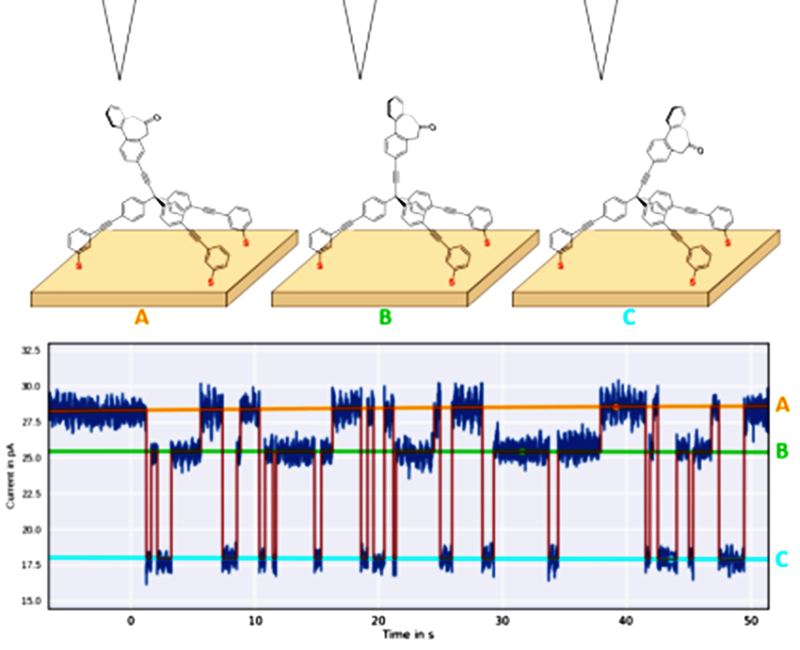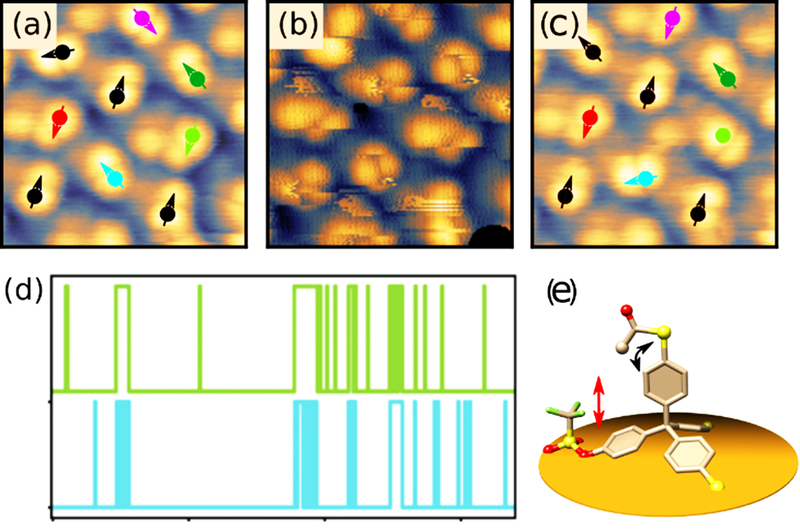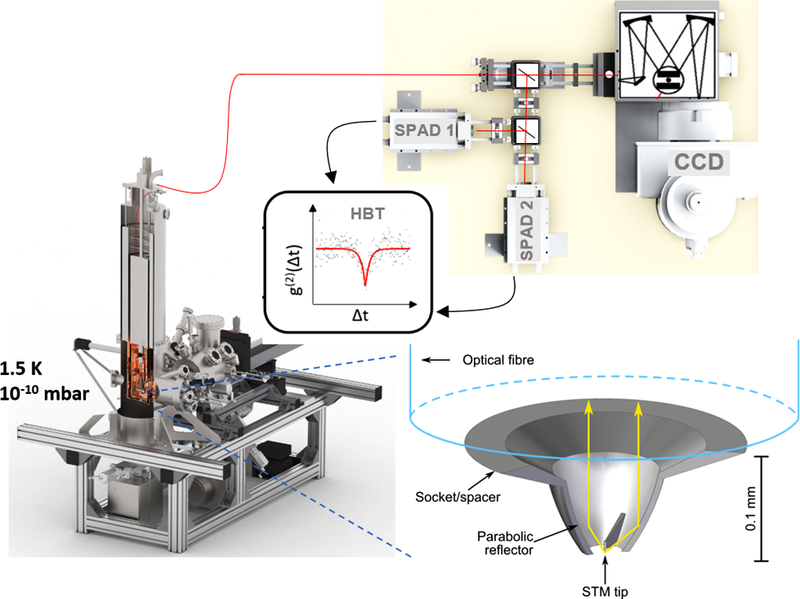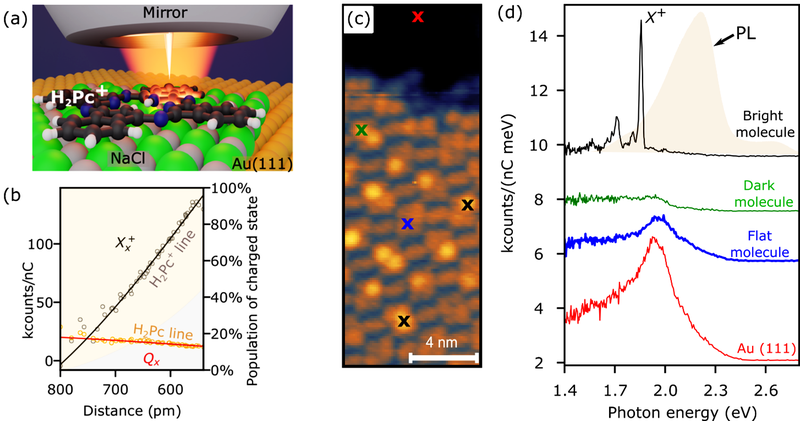Working Group Quantum Control
|
Tailor made functionalized tripodal molecules:
Towards molecular electronics
We use a home-built 5 K STM to address functional tripodal molecules on surfaces as to control and monitor their state. We therefore developed various novel experimental methodologies in order to controllably position, characterize, address and switch single molecular functional units.
One example is an electrically actuated molecular toggle switch where we used a spirobifluorene variant with a well-defined spatial arrangement of the nitrile head group. The polar group can be acted on by electrostatic forces by application of electric fields in the tunneling junction [1]. We recently extended this research with the realization of molecular rotors [2] and electrically driven molecular motors (see Fig. 1). Manipulation of individual molecules within a self-assembled structure allows writing and reading information on the nanoscale [3] and to study the intermolecular interactions (see Fig. 2) [4].
|
|
Optimized molecular light emitters:
Increased quantum yield and single-photon sources
The 1K scanning tunneling microscope (STM) developed in the group is equipped with a micro fabricated parabolic mirror with the STM tip in the focus that then guides the light into an optical fiber [5]. The mirror tip structure manufactured with 3D lithography gives us a significantly increased light collection efficiency in comparison with lens systems. The light emitted from the STM junction can then be guided into a grating spectrometer for spectral analysis or to a Hanbury-Brown Twiss interferometer that allows to determine the time correlation of the photon train (see Fig. 3).
The energy of the tunneling electrons can lead to various excitations in the STM junction and potentially to light emission. STM-induced luminescence (STML) allows to investigate light emission properties of atomic scale materials regions as defined by the tunnel contact area in combination with the high lateral and energy resolution of STM [6,7].
Our main focus is the investigation of electroluminescence of single molecules in the STM junction. STML combines photon spectroscopy from single molecules with the high lateral and energy resolution of STM. In this way, the adsorption configuration of single molecules and the shape and energy of the molecular orbitals can be identified, and correlated with the light emission spectrum.
In contrast to conventional photoluminescence spectroscopy, STML also allows to selectively inject holes/electrons into specific orbitals and to charge individual molecules and by this to observe not only charge neutral transitions but also transitions involving charged excited states [8],[9].
Electroluminescence from single molecules contacted by metallic leads imposes conflicting demands for the coupling between the molecule and the metal: To conduct the necessary tunneling current, a certain hybridization is necessary. At the same time, however, the chromophore needs to be decoupled to prevent fluorescence quenching. While typically a thin insulating layer of NaCl between the metal surface and the molecule is used [8], we also aim for an alternative approach where the insulating spacer is integrated into the molecular design [7,9].
|
|




